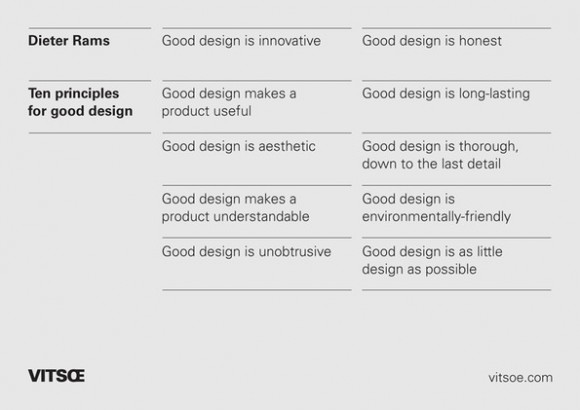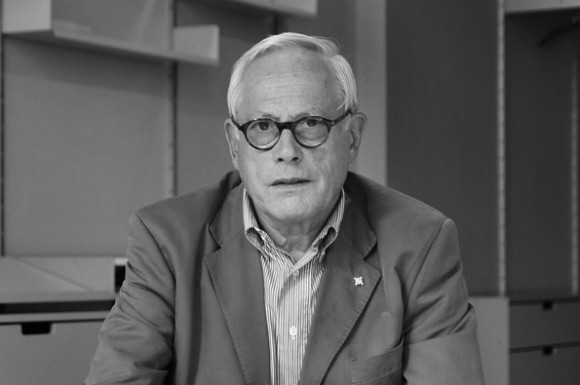Dieter Rams’ 1976 Speech Released
In 1976 leading designer Dieter Rams sketched out some of his core beliefs in front of an audience in New York City. Concerning his work with Vitsoe, it’s an invaluable insight into the principles on which the work of one of the 20th Century’s leading design figures were based and is a must-read for creatives across any design discipline. Massively ahead of its time and bursting with sound advice, the full transcript has just been released to mark Dieter’s 80th birthday later this month.
Dieter Rams; The ideas behind my work as a designer have to match with a company’s objectives. This principle applies to my work not only at Braun but also at Vitsoe. I have been working for these two companies for about 20 years and – I like to point out – only for these two companies.
I am convinced that design – at least in the terms I understand it – cannot be performed by someone outside the company. I am absolutely convinced that this is true if products are designed as part of a larger system, like we do at Vitsoe.
In 1957 I began to develop a storage system that formed the basis of the company Vitsoe, which was founded in 1959. Thus the ideology behind my design is engrained within the company.
Ladies and gentlemen, design is a popular subject today. No wonder because, in the face of increasing competition, design is often the only product differentiation that is truly discernible to the buyer.
I am convinced that a well-thought-out design is decisive to the quality of a product. A poorly-designed product is not only uglier than a well-designed one but it is of less value and use. Worst of all it might be intrusive.
The development and changes that we have initiated with our work at Vitsoe are, I believe, positive for the development of good design as a whole. The introduction of good design is needed for a company to be successful.
However, our definition of success may be different to yours. Striving for good design is of social importance as it means, amongst other things, absolutely avoiding waste.
What is good design? Product design is the total configuration of a product: its form, colour, material and construction. The product must serve its intended purpose efficiently.
A designer who wants to achieve good design must not regard himself as an artist who, according to taste and aesthetics, is merely dressing-up products with a lastminute garment.
The designer must be the gestaltingenieur or creative engineer. They synthesise the completed product from the various elements that make up its design. Their work is largely rational, meaning that aesthetic decisions are justified by an understanding of the product’s purpose.
I am convinced that people have an interest in what we are doing at Vitsoe since our products are useful; I expect they also appreciate the aesthetic that follows. These qualities are the result of progressive and intelligent problem solving.
Functionality must be at the centre of good design. A product must be functional in itself but it also must function as part of a wider system: the home. Vitsoe’s 606 Universal Shelving System is successful due to its high functionality and its ability to adapt to any environment.
Read all here at NYTimes



